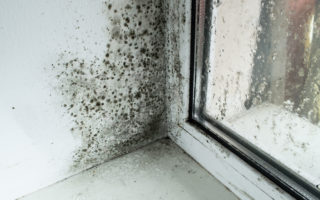
Black mold in the corner of the window sill. Moldy plastic windows.
Air purifiers work well on a wide range of air contaminants. They work on natural biological items like dust mite debris. They can also limit various kinds of volatile chemicals.
Among all of these pollutants, though, mold is a specific concern for many Americans who suffer from some form of mold allergy. According to the National Institutes of Health (NIH), 3-10% of Americans, or 9.9 to 33 million people have a mold allergy. Assuming that 50-70% of these patients suffer mild symptoms, that’s in the ballpark of twelve million people, with the rest exhibiting more severe allergies.
There are also different types of mold allergies, including allergies to:
all mold
· toxic black mold
· potentially plant-based molds like Alternaria and aspergillus
· Cladosporium, often found on wood and textiles
· Penicillium, which forms on food and other substances
Even in people who aren’t allergic to mold, they could still be affected. Mold is unsavory. It often smells, and irritates the lungs.
Then there’s the task of dealing with mold in a building. Mold remediation is so difficult that the discovery of mold will often lower property values significantly.
Prevention is much better than remediation. If property owners or others can keep dehumidifiers in place where moisture may build up, they may be able to prevent mold from growing.
When the mold has grown a certain amount and starts to spread, remediation can be extremely difficult.
One way to deal with small amounts of mold in a building is through using a modern air purifier. This cycles the air and removes mold and other contaminants.
The best air purifiers for mold have specific features and technologies that are good for removing the tiny spores from an airspace.
The HEPA Filter
One good place to start is a filter that’s up to the HEPA standard. A HEPA filter can trap up to 99.97% of particles down to those the size of mold spores, around 2.5 microns.
In fact, these filters are in place in many household items, like vacuum cleaners, that deal with air cycling.
Multi-stage Filtration
Here’s another thing to look for in high-quality air purifiers for removing mold.
Some models don’t just have one filter. They have multiple filters. They may have a HEPA filter, but also a pre-filter or some other filter technology.
One example is where an initial filter takes larger particles out of the airstream, and then the secondary filter focuses on the remaining small particles. This one-two punch can be extremely effective. It helps to remove more of everything that’s floating in the air. That includes mold.
High CADR Rates
In the business, there’s a metric called CADR, the Clean Air Delivery Rate, and it’s a standard used by manufacturers.
An air purifier with a high CADR is able to return more clean air in a given period of time. So that’s one metric to look for when you’re shopping for an air purifier that has a lot of power to control mold in your indoor air.
It’s also helpful to look at standards for air changes per hour, or ACH, to understand how a machine is rated, and how much air can go through in an hour’s time.
Ultraviolet Light Technology
In addition to the HEPA filter and other filtration, some models have UV lights that can kill bacteria and mold spores.
With mold, the ultraviolet light attacks the mold’s DNA. That means it can neutralize mold spores in the air.
UV Light and Ozone
As you’re shopping, it’s important to look for ozone ratings. This potentially harmful substance can be generated by some machines. That’s news to many people. They don’t know that the appliances can do this.
Some machines generate ozone on purpose, in order to kill various other air contaminants. But it’s important to note that other machines emit ozone as part of the process of ionization, or situations where the machine is working at a molecular level to trap or change particles, for instance, when electrostatic precipitators use charged plates to capture particles.
Ozone can trigger an asthma reaction, or irritate the lungs. It can be especially harmful to children, the elderly, or people with respiratory conditions.
In order to avoid buying a machine that releases ozone, look for a CARB (California Air Resources Board) or UL certification, for “ozone-free” operation.
The PM 2.5 Standard
PM 2.5 is a rating for particles under 2.5 microns in diameter.
That includes substances like mold.
So it’s important to look for machines that can handle PM 2.5 in trying to remediate mold from an indoor space.
In a nutshell, most shoppers are looking for air purifiers with a particular mix of HEPA filters, multiple filters, activated carbon filters, and UV light.
In addition, you can look for things like whisper-quiet features, and programmable settings.
Let US Air Purifiers assist with the process of evaluating various purchases, and providing you with the right fit for your needs.